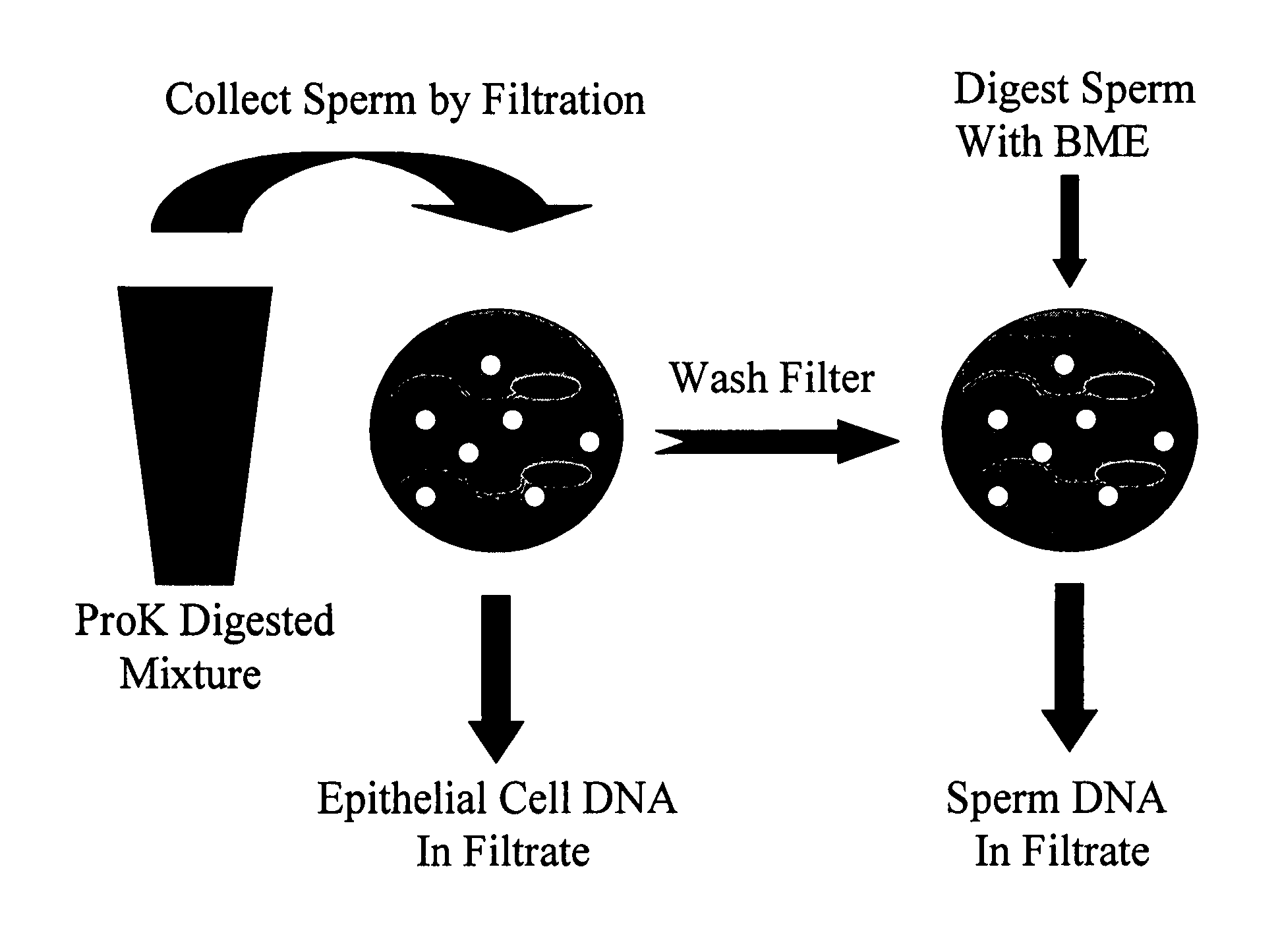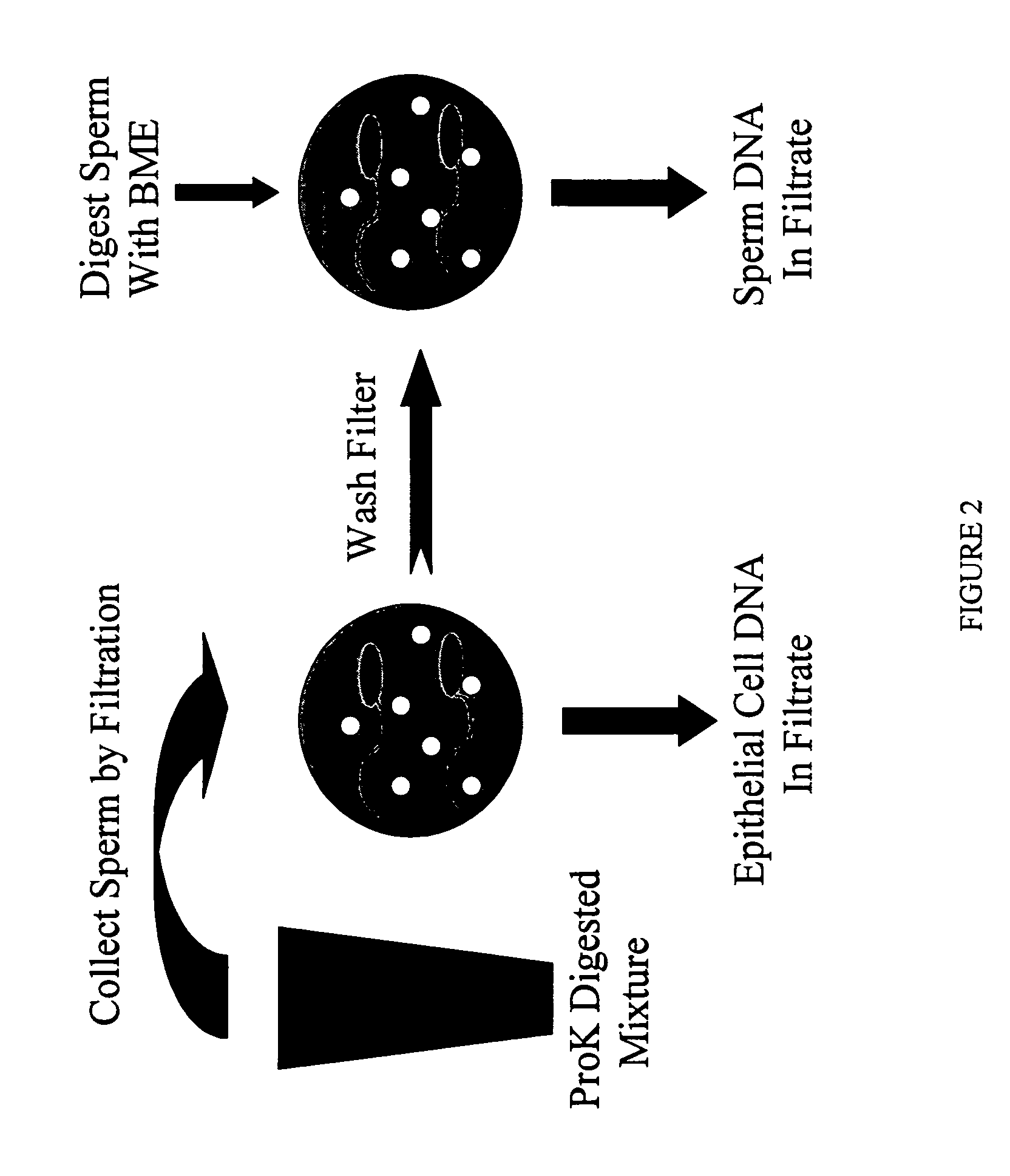Method for processing samples containing sperm and non-sperm cells for subsequent analysis of the sperm DNA
a sperm dna and dna technology, applied in the field of cell separation and nucleic acid isolation, can solve the problems of unprocessed swabs taken from rape victims, inability to use the autosomal str profile in the fbi codis, and difficulty in automating centrifugation and careful removal of supernatants. achieve the effect of reliable results and suitability for automation
- Summary
- Abstract
- Description
- Claims
- Application Information
AI Technical Summary
Benefits of technology
Problems solved by technology
Method used
Image
Examples
example i
Sperm DNA from Vaginal Swab Samples was Isolated According to a Preferred Filtration Embodiment of the Present Invention and then Analyzed
[0056] Sperm-free vaginal swabs and semen were taken from healthy volunteers and the cells were counted using a hemocytometer. Vaginal swab cuttings (one half of a swab) each having approximately 1.3 million epithelial cells were spiked with 2 μl, 4 μl and 10 μl of a 10% semen solution having 5000 sperm per μl (10,000, 20,000 and 50,000 sperm per swab cutting). The spiked cuttings were left at room temperature for two weeks. The cuttings were then placed in a 96 deep-well microtiter plate with 600 μl of Qiagen™ ATL buffer (which contains SDS) and shaken for 30 min at room temperature at 500 rpm on a rotating shaker. The cotton material from the swab was removed with tweezers and pressed against the side of the well to reduce liquid loss, leaving about 500 μl of ATL buffer in the well. 25 μl of a 500 μg / ml proteinase K solution was added, mixed by...
PUM
| Property | Measurement | Unit |
|---|---|---|
| Length | aaaaa | aaaaa |
| Fraction | aaaaa | aaaaa |
| Fraction | aaaaa | aaaaa |
Abstract
Description
Claims
Application Information
 Login to View More
Login to View More - R&D
- Intellectual Property
- Life Sciences
- Materials
- Tech Scout
- Unparalleled Data Quality
- Higher Quality Content
- 60% Fewer Hallucinations
Browse by: Latest US Patents, China's latest patents, Technical Efficacy Thesaurus, Application Domain, Technology Topic, Popular Technical Reports.
© 2025 PatSnap. All rights reserved.Legal|Privacy policy|Modern Slavery Act Transparency Statement|Sitemap|About US| Contact US: help@patsnap.com



